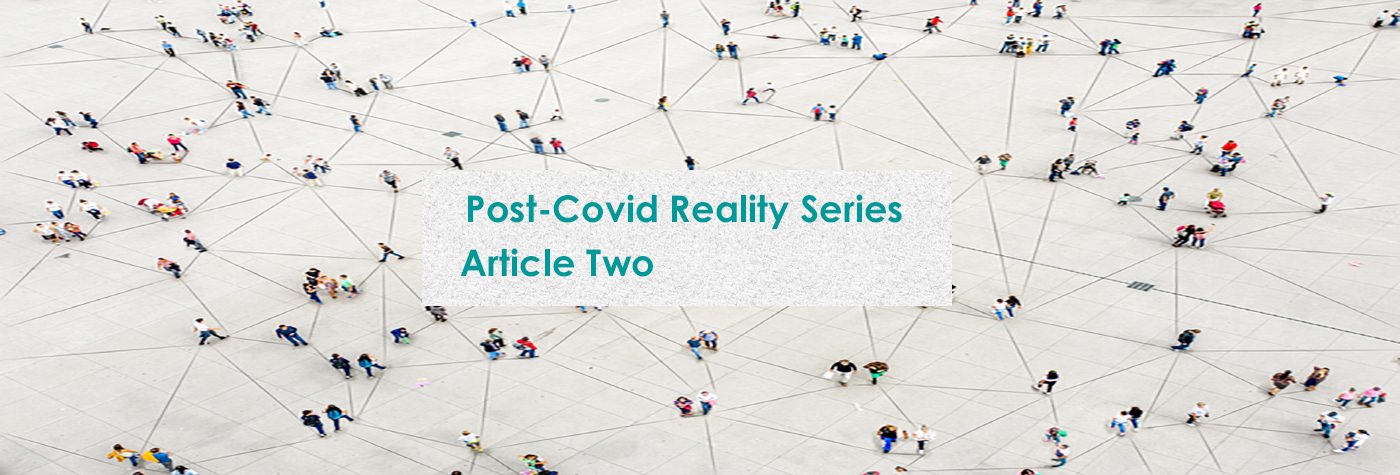Equipping End Users: Future-proofing the device pool for a post-Covid world
Share:
Date:
July 2020

key fact
In March, use of Microsoft Teams rocketed by 40% (The Verge), while Zoom daily users quadrupled (MarketWatch)
In the second article of our Post-Covid Reality series, we explore the issues IT faces in managing a hardware portfolio among a remote workforce and reflect on:
- IT’s leadership role in facilitating and maintaining productive remote working.
- How to sustain an optimised device pool to maintain end user productivity.
- Why retrospective governance and lifecycle management will be crucial to crisis recovery.
In our recent introduction to the Post-Covid Reality, we looked at the challenges and opportunities faced by businesses experiencing a seismic shift to remote working. IT has been at the sharp end of managing a rapid response. By necessity, those responsible have stepped up, rewriting the rule book as they go. Business as usual and transformation programmes have given way to crisis management. Heavy duty governance has deferred to creative autonomy in response to the board mandate to “just get it done”.
And the job is indeed being done, with considerable speed and agility. We see the most obvious evidence of remote uptake amongst the tech giants. In March, use of Microsoft Teams rocketed by 40% (The Verge), while Zoom daily users quadrupled (MarketWatch). As workforces get to grips with this new world of online collaboration, challenges arise around software, connectivity, security, service management, and governance. But perhaps the most pressing priority right now is a fresh look at your device pool. After rapid, potentially costly hardware rollouts, IT will be under pressure to retrospectively optimise and govern devices, while gearing end users up to deliver a fruitful recovery.
Enabling and sustaining the end user environment
In many cases, the immediate needs of the remote workforce have demanded fast, standardised bulk orders among other tactics. Cost and device hardening have been temporarily demoted. BYOD averse organisations have waived strict policies. Security concessions have been allowed. Moving forward, though, IT must revert to a more strategic approach to aligning assets with end user cultures, capabilities, and functions. IDC predicts a global hardware spending decline of 8.8% in 2020, significantly reducing room for future manoeuvre in procurement. Against that backdrop, it makes sense to re-address your existing hardware lifecycle as the environment stabilises.
This will be as much a cultural exercise as it is economic. An end-to-end view is required to build a picture of your user landscape. A bookkeeper, for example, is unlikely to require the cutting-edge power, speed and capacity favoured by DevOps or Creative. A mature worker might have more modest tech expectations than a Gen Z worker – and, in fact, could be hindered by an enforced jump to unfamiliar territory. As we emerge from the pandemic, users may be left in possession of expensive and under-utilised tools that would be better deployed elsewhere.
In the same vein, different users will require varying levels of support and access, so service management needs to adapt. Balancing the functional, cultural, financial and support considerations around your device pool will be a complex – but necessary – strategy to maximise efficiencies.
Future-proofing the hardware portfolio with intelligent tactics
It is also likely that a significant true-up bill is on the horizon as the real cost of crisis management emerges. Annual operational planning (AOP) will need to be revisited, costs and efficiencies realigned, and a longer-term view taken moving ahead. Plus, we can anticipate that collaborative platforms will increasingly monetise – a cost that will often be unavoidable. The emergency tools of Covid 19 working have fast become the norm and it is unlikely that we will see end users move away from them. Indeed, many businesses will embrace this as they experience the benefits of remote working – savings on office space, lower carbon footprints, and a happier (hence more productive) workforce to name just a few.
For IT, this presents a conundrum. Its ability to deliver during the pandemic has increased expectations of what can and should be achieved. Meeting those expectations while adapting to a changing budgetary landscape will be a significant challenge. What’s more, although distributors have risen to the challenge of meeting huge demand, the knock-on effect will be a likely depletion of new stock, at least in the short term. That promotes the need to pro-actively review not just internal processes but the entire supply chain – especially as zero touch deployment changes the onboarding and updating landscape. Delayed decisions will need to be addressed alongside emerging opportunities, but this requires decisions makers to align with operations in a structured way to mitigate risk and maximise opportunity.
Perhaps most importantly, the scope is there to future-proof the business more intelligently than ever before. Prior to the pandemic, some organisations were more disaster ready than others. Now, we have all experienced the unimaginable. IT has demonstrated the crucial role that technology can play for the business. Now is the time to build on the response so far and ensure that end users are geared up with the right devices that will enable them to excel.
More resources:
Read the full article series. The next article looks into end user software.
Get inspired with our industry insights and case studies.
Explore Mason Advisory’s approach to real-world Enterprise Architecture
Seek support from the Mason Advisory team
Author: Jagjeet Pandha
Published: LinkedIn

